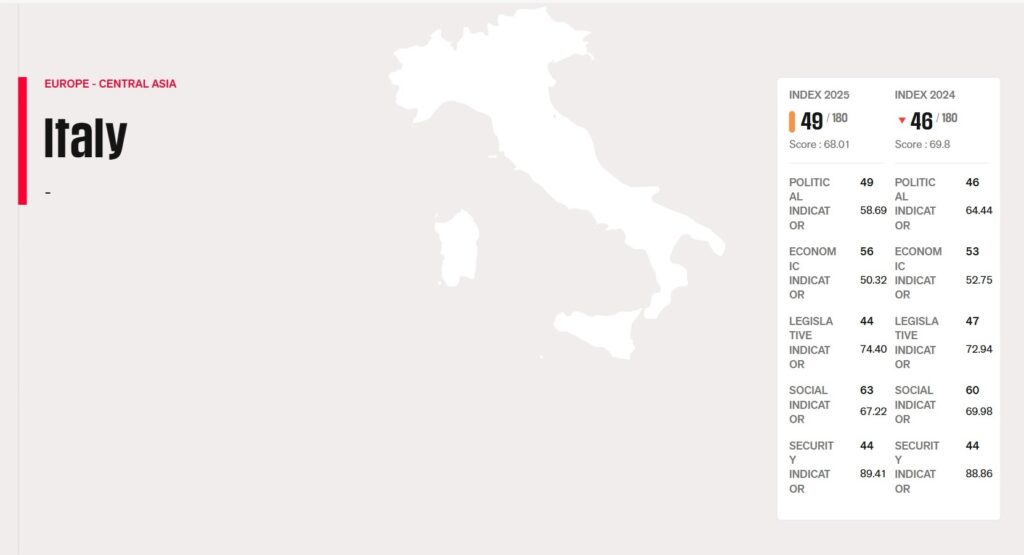RSF.ORG – Press freedom in Italy continues to be threatened by mafia organisations, particularly in the south of the country, as well as by various small, violent extremist groups. Journalists also denounce attempts by politicians to obstruct their freedom to cover judicial cases by means of a “gag law” – “legge bavaglio” – on top of the SLAPP procedures that are common practice in Italy.

Media landscape
The Italian media landscape is developed and has a wide range of media outlets that guarantee a diversity of opinions. The broadcast sector includes several public TV channels (such as Rai 1) and radio stations, as well as many privately owned media outlets. This diversity is also found in the print media, which includes nearly 20 dailies (such as Corriere della Sera and La Repubblica), about 50 weeklies (such as L’Espresso and Famiglia Cristiana), and many magazines and various news websites.
Political context
Media professionals sometimes give in to self-censorship, either to conform to their news organisation’s editorial line, or to avoid a defamation suit or other form of legal action. This can be aggravated for crime and court reporters by the legge bavaglio or “gag law” voted by Prime Minister Giorgia Meloni’s ruling coalition, which prohibits the publication of a provisional detention order until the end of the preliminary court hearing. Journalist unions also condemn growing political interference in public media.
Legal framework
A degree of legislative paralysis is holding back the adoption of various bills that have been proposed to preserve and even improve journalistic freedom. This partly explains the limitations that some reporters encounter in their work. The criminalisation of defamation and the numerous SLAPP procedures limit journalistic freedom.
Economic context
The media are increasingly dependent on advertising revenue and state subsidies. The print media is also facing a gradual decline in sales. Moreover, the announced acquisition of one of Italy’s main news agencies, Agenzia Giornalistica Italia, by Antonio Angelucci, the MP of the ruling majority and owner of several other major Italian newspapers, highlights the threat of media concentration and conflicts of interest. The result is a growing precariousness that dangerously undermines journalism, its dynamism and its autonomy.
Sociocultural context
The polarisation of society during the Covid-19 pandemic has affected journalists, who have been victims of both verbal and physical attacks during protests against health measures. This polarisation persists, crystallising around political or ideological issues related to current events.
Safety
Journalists who investigate organised crime and corruption are systematically threatened and sometimes subjected to physical violence for their investigative work. Their cars or homes are sometimes destroyed by arson. Online intimidation campaigns are orchestrated against those who pursue these issues. About twenty journalists currently live under permanent police protection after being the targets of intimidation and attacks.

Lascia un commento